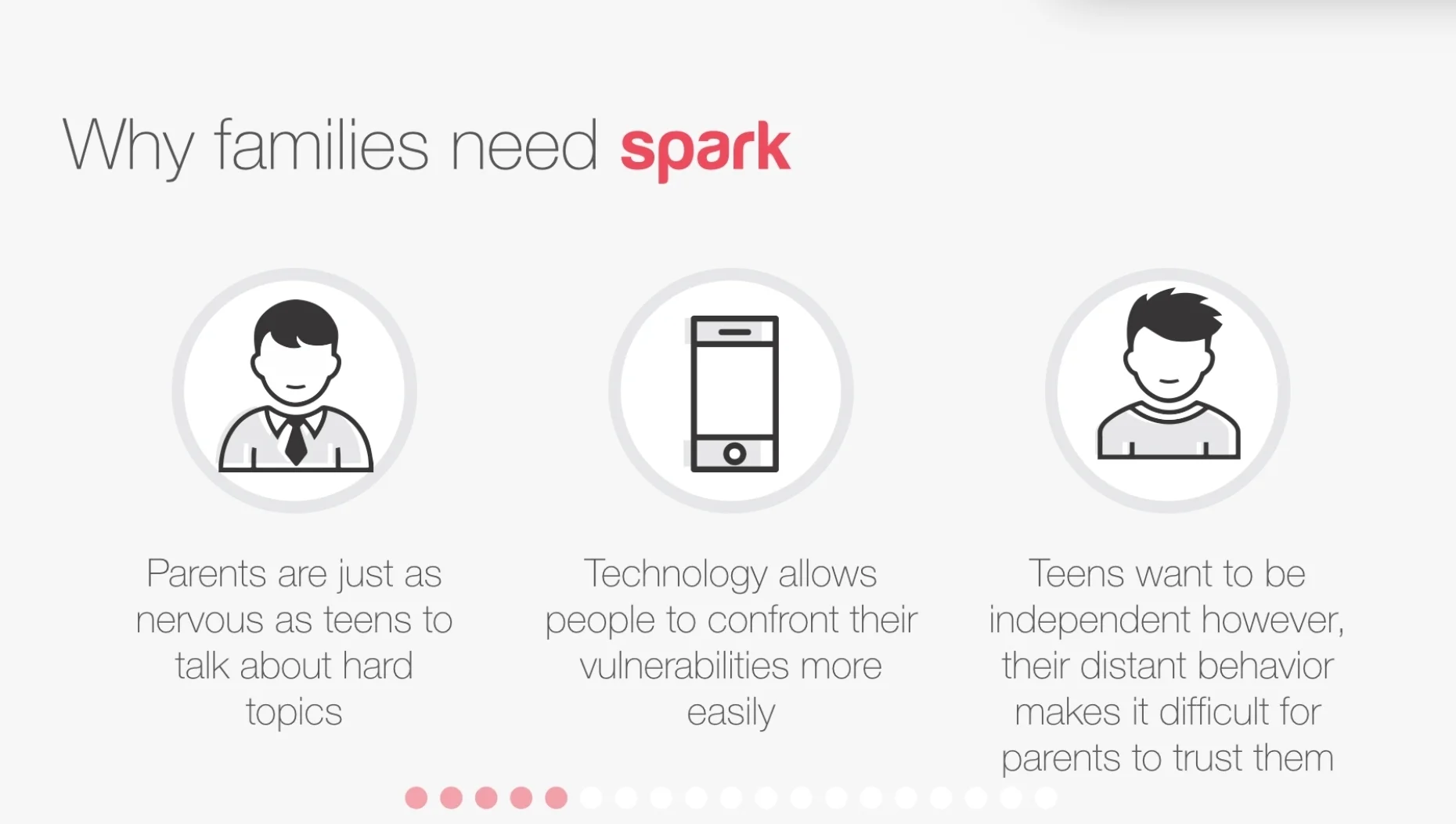Strategy: Healthcare
Strategy for a National Healthcare Nonprofit
PROJECT: National Reproductive Health Organization+ Parsons The New School for Design, 2016
GOAL: Create a Strategy to Increase Youth Engagement
STAGE 1 METHODOLOGY: Design thinking, Analogous Research, One-on-One Interviews, Cultural Probe Research, Small Group Moderation, Co-creation Workshop Facilitation, Organizational Research, Personas Development, Journey Mapping, Insights Development, Cultural Audit
STAGE 2 METHODOLOGY: SWOT Analysis, Competitive Audit, Business Model Canvas, Business Model Development, Operational Planning, Rapid Prototyping, Card Sorting, Strategy Development, A/B Testing, UX Design, Storytelling
FINAL OUTCOME: Strategy to encourage teen and parental communication through a video messaging and educational platform
STAGE 1: Research
We conducted numerous interviews with teens and parents as well as observations of teens, many hours of online research, and an array of analogous research. The most noteworthy insights we gleaned were:
1. People need to be in the right mindset before they can take action.
2. People (and especially teens) feel vulnerable talking about personal concerns and must have a connection to their conversation partner.
3. Real connection develops only through authentic conversation.
STAGE 2: STrategy development
When kids are young, they typically have a strong bond with their parents and they have long conversations about a variety of topics. But as kids get older and enter into their adolescence, a disconnect develops between them. It leaves parents wondering what’s happening in their teen’s life. And it often leaves teens missing a valuable resource that they need now even more than ever. What teens need is way reconnect with trusting adults.
Spark is an interactive digital video platform that lets parents make videos of themselves telling personal stories or imparting wisdom and then privately share it with their pre-teen or teen. With communication comes connection, and a better partnerships to face the hard, messy, or confusing parts of growing up. Spark helps parents and teens take the first step to better communication and connection.
STage 3: product development & testing
In designing our prototype we considered and tested several different platform attributes and financial models. We originally thought about a pay-per-use or subscription model to the site. But we decided against them because it didn’t feel right to have this platform be a money-making venture. We see this site as being accessible for all people regardless of their ability to pay. The donations and ad revenue generated should cover the costs of operating the site.
If this site isn’t going to be a major generator of revenue, you may be asking yourself why the client would want to implement spark. Currently the client serves more than 50,000 patients each year. Many of those patients are teens in a crisis state. Through our platform we can help create teens who are empowered and responsible and take care of their health proactively. That results in the client serving fewer patients who are in crisis-mode when care is potentially more difficult and more expensive. Instead more focus can be on routine, preventative health care visits.


